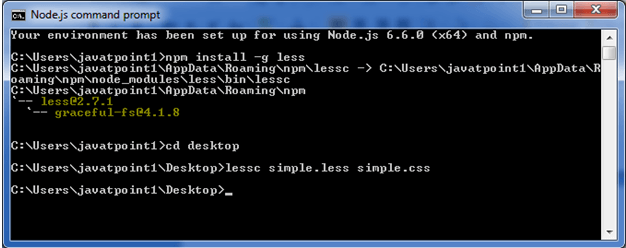It is useful to prepend a selector to the inherited (parent) selectors when selector ordering is changed. The & operator is placed after the selector to achieve this.
For example: when you use Modernizer, you may wish to specify different rules depending on supported features.
Changing Selector Order Example
Let's take an example to demonstrate the usage of changing selector order parent selectors.
Create a HTML file named "simple.html", having the following data.
HTML file: simple.html
Now create a file named "simple.less". It is similar to CSS file. The only one difference is that it is saved with ".less" extension.
LESS file: simple.less
Put the both file "simple.html" and "simple.less" inside the root folder of Node.js
Now, execute the following code: lessc simple.less simple.css

This will compile the "simple.less" file. A CSS file named "simple.css" will be generated.
For example:

The generated CSS "simple.css", has the following code:
Output:




0 Comments